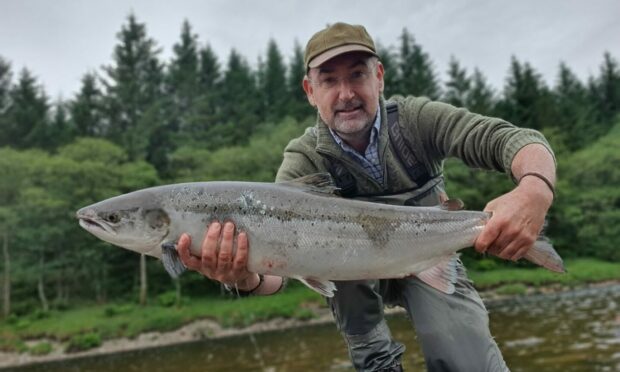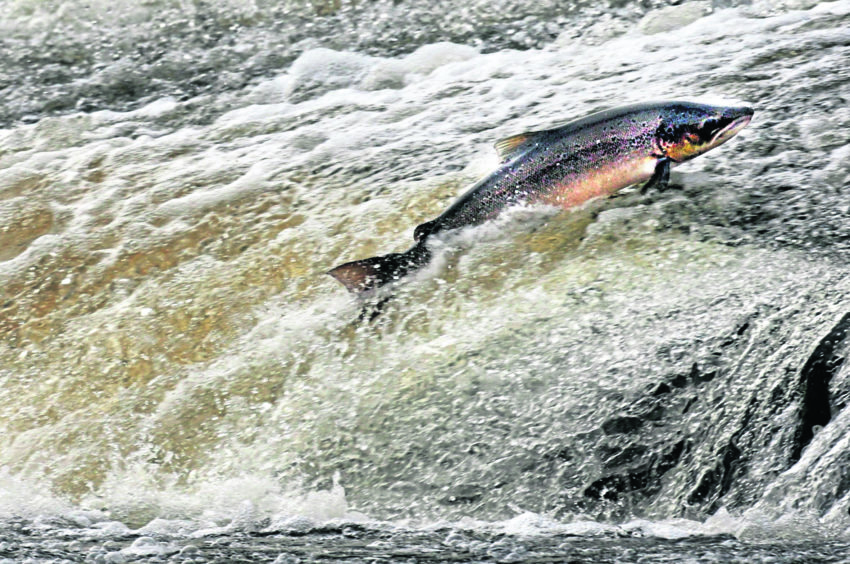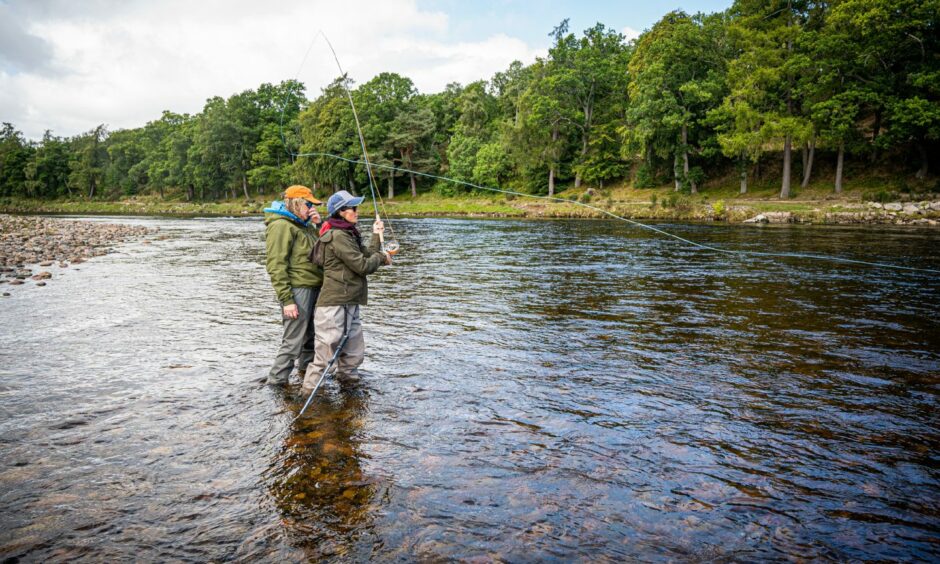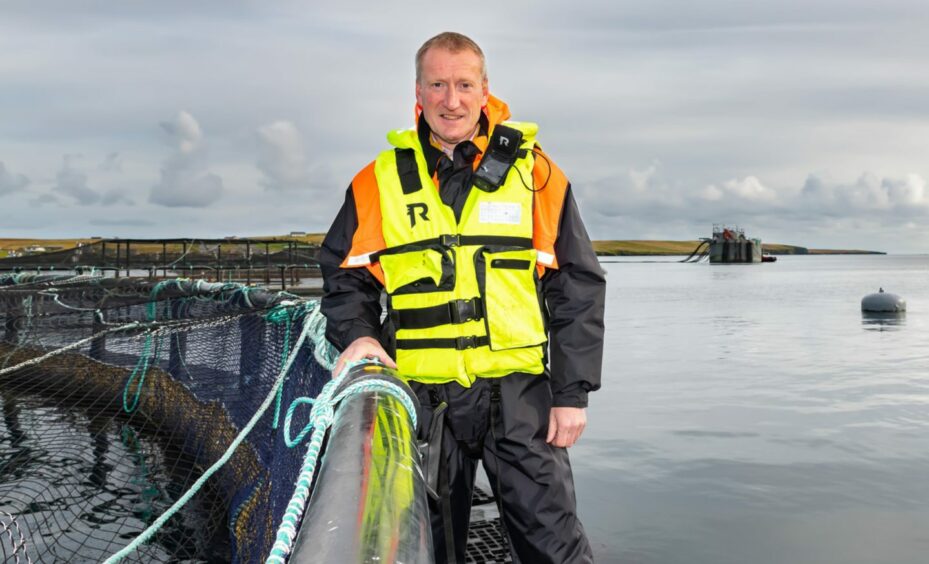A new £145,000 fund raised from fisheries has been launched to help save Scotland’s wild salmon through habitat conservation, protection from predators and restocking programmes.
The Salmon Scotland Wild Fisheries Fund will see £145,000 invested by Scotland’s salmon farmers next year to stem the decline in fish numbers.
Wild salmon and sea trout populations throughout the UK have been in decline for decades – particularly because of habitat loss and rising river temperatures with wild Atlantic salmon only having a survival rate of around 1%-2% compared to around 85% for farm-raised salmon.
The Scottish Government has identified other pressures facing wild salmon, including non-native plants, predators such as pikes, eels, birds and seals as well as obstacles to fish passage including dams and weirs.
The Wild Fisheries Fund replaces and builds on the work of the Wild Salmonid Fund, which since 2021 has invested more than £190,000.
It will make more money available to a broader range of organisations and projects.
The Wild Fisheries Fund will be coordinated by fishery manager Jon Gibb, clerk of the Lochaber District Salmon Fishery Fishery Board. Mr Gibb is based in Fort William in the heart of the aquaculture sector.
‘Off the Table’ campaign
Details of the funding come after campaigners recently called for chefs to remove Scottish salmon from menus and following claims the industry is “destroying” the environment.
UK charity wild fish (formerly known as Salmon & Trout Conservation), launched its Off the Table campaign based on data it has collated, urging restaurants and chefs to take farmed salmon off the menu.
Citing what it notes is publicly-available information, the charity says data supplied to the Scottish Environment Protection Agency (SEPA) and the Fish Health Inspectorate, show an industry that is “failing to control parasites and diseases” on its farms or maintain adequate conditions for keeping fish healthy (with average mortality rates of 24.1%).
However, Mr Gibb is championing a “constructive relationship” between the farm-raised salmon sector, fisheries and angling groups.
He said: “The farmed and wild salmon sectors have a common interest to thrive in our shared space and both rely on the heritage of the wild salmon and the angling that depends upon them.”
Applications will be invited from fisheries organisations, including local angling clubs, fishery boards and other community associations.
Fund will prioritise applications of a practical nature
The Wild Fisheries Fund is part of a total five-year investment of £1.5 million from salmon farmers.
To date, grants have been used to save and restore a historic dam in the Western Isles that assists wild salmon to progress to their spawning grounds, as well as restoration projects to reduce riverbank erosion and measures to provide tree canopy and in-stream cover for young salmon.
The revamped fund will prioritise applications of a practical nature which aim to protect and enhance wild salmon populations and local angling opportunities, recognising salmon and trout fishing is at the heart of many Highland communities.
The fund will be open for applications on February 1 and close on March 31 with decisions on grants taken by Salmon Scotland next April.
Mr Gibb added: “Wild salmon are under very serious threat from a wide range of impacts both in the river and at sea and any projects to further understand those impacts and mitigate against them are urgently required.
“The fund now covers applications from local angling clubs and other community bodies in the shared space to improve their angling opportunities – these organisations have often been unable to access significant funding in the past and yet salmon and trout fishing is at the very cultural heart of many Highland communities.
Decades-long decline on east and west coasts of Scotland”
Salmon Scotland chief executive Tavish Scott
“Both the farmed and wild salmon sectors have a common interest to thrive in our shared space and both rely on the rich heritage of the wild salmon and the angling that depends upon them.”
Salmon Scotland chief executive Tavish Scott noted: “Wild salmon is one of Scotland’s most iconic species, but there has been a decades-long decline on the east and west coasts of Scotland as a result of climate change and habitat destruction.
“Scotland’s salmon farmers want to play their part finding solutions, engaging constructively with the wild fish sector and taking meaningful action.
“Many salmon farmers are anglers themselves and most people in the fisheries and angling sectors recognise the importance of a healthy shared environment, ensuring fish can thrive in our waters.
Collaboration is key
“Through the success story of farm-raised salmon we have developed expertise in hatching and rearing salmon that can thrive at sea.
“As well as financial support to projects, our members are sharing their knowledge and experience to support wild fisheries with re-stocking, again showing how collaboration is key to reversing the worrying decline in wild salmon numbers.”
The Fund accepts applications from the following:
- Local angling clubs and associations (migratory and non-migratory species)
District Salmon Fishery Boards and Fishery Trusts - Constituted voluntary or community groups
- Registered charities
- Scottish Charitable Incorporated Organisations (SCIO)
- Social Enterprises
- Community Interest Companies (CIC)
- Not-for-profit organisations
Capital costs, equipment costs, external contractors, volunteer expenses and proportionate staff time may be applied for.
Projects likely to attract full funding elsewhere are unlikely to be supported (although seed funding applications that will leverage additional support from other sources are encouraged).
Projects that might attract funding could include:
- Migration barrier removal, for example, redundant dam removals or fish passage improvements
- Further investigation and mitigation against known impacts of freshwater smolt predation
- Evidence-based and authorised restocking programmes consistent with the current Marine Scotland stocking policy
- Hatchery-based operations using contemporary techniques such as genetic screening, live gene banks and cryopreservation of genes
- Freshwater habitat improvement
- Fish counters, fish passes and underwater cameras
- Practical partnership projects to improve interactions and understanding between wild and farmed fish (projects of a purely academic nature are unlikely to be supported)
- Improvements to angling facilities by constituted angling clubs and associations with secure tenure (riverside paths, boats, huts, pool improvements, disability platforms, bankside works).
- Junior angling initiatives
- Projects that promote inclusion and the health benefits of angling to the wider community
- Initiatives which encourage education and outreach surrounding Scotland’s salmon heritage



